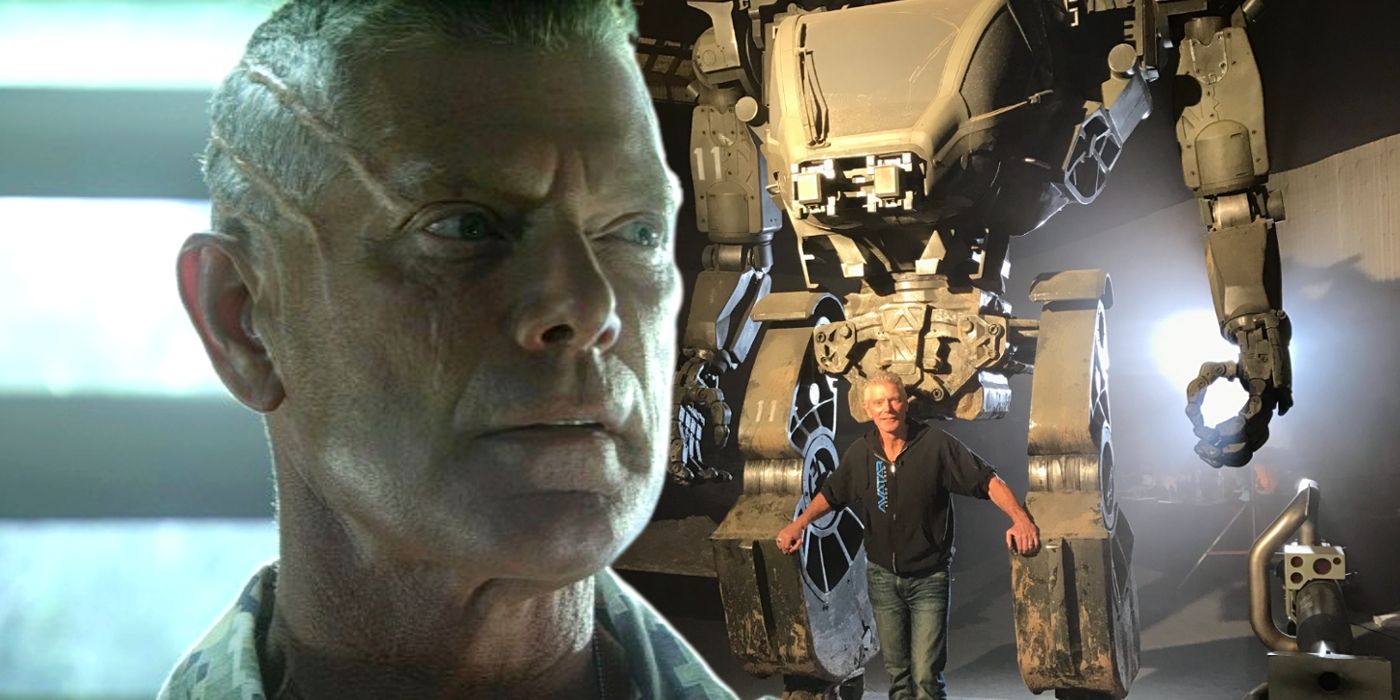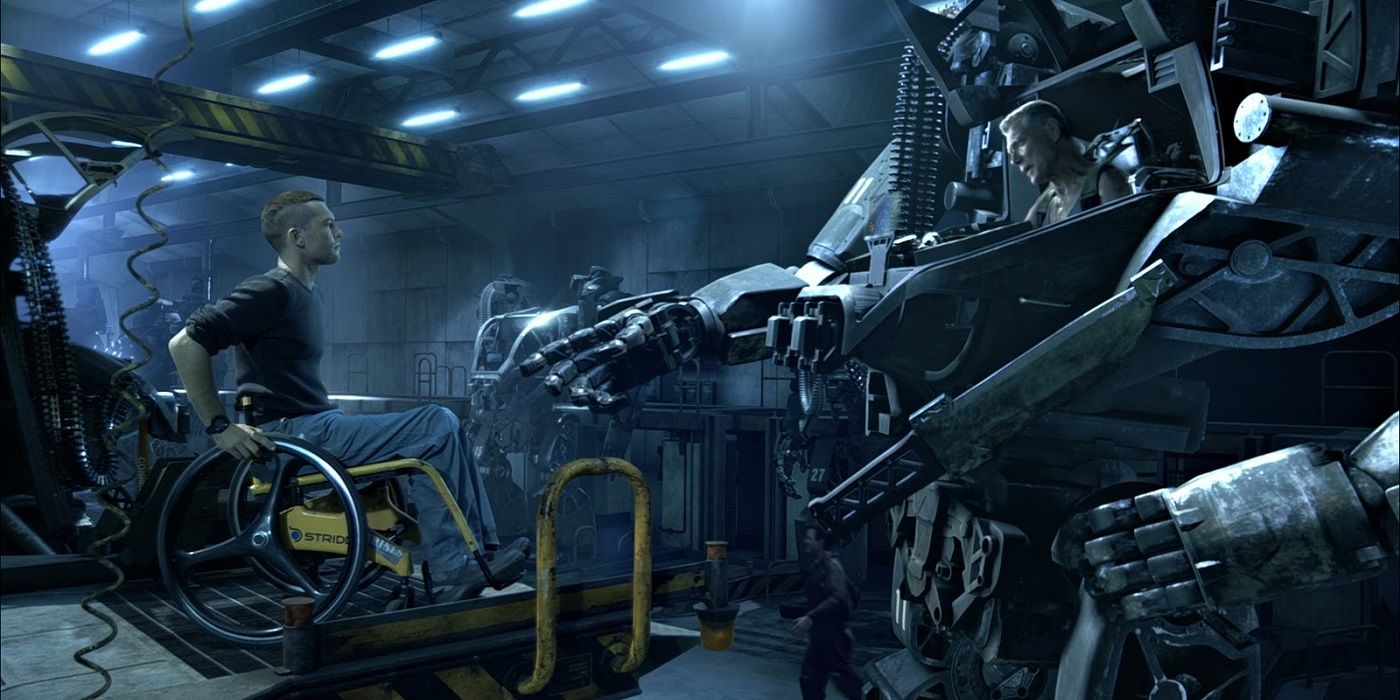Star Stephen Lang shares a behind-the-scenes photo of a real-life version of the mechanized AMP suit Quaritch uses in Avatar. Released in 2009, James Cameron's Avatar tells the story of paraplegic marine Jake Sully (Sam Worthington), who is tasked with using an avatar body to infiltrate a community of Na'vi. After falling in love with Neytiri (Zoe Saldaña), a local woman, and the Na'vi's way of life on Pandora, Jake chooses instead to fight against the human invaders and the ruthless Colonel Miles Quaritch (Lang). Avatar went on to become the highest-grossing movie of all time and a sequel, Avatar: The Way of Water, continues the story of the Sully family and Quaritch's quest for revenge.In a new post on Twitter, Lang shares a behind-the-scenes look at Quaritch's AMP (Amplified Mobility Platform) suit, which features prominently in Avatar's climax during his character's fight against Jake and Neytiri.
The suit, identifiable as Quaritch's from the number "11" painted on its right arm, seems to have been built to scale, standing more than twice Lang's height. The image features the suit caked in mud and a GAU-90 autocannon prop resting on the ground beside it. Quaritch's AMP suit also features briefly in Avatar: The Way of Water when Lang's character, now a Na'vi avatar clone, returns to the site of his final battle with Jake in the previous film.
Why The Avatar Movies Build So Many Props & Costumes For Real
Both Avatar films heavily rely on visual effects to bring their stories to life, with much of Pandora and its flora and fauna being entirely CGI. One of the big reasons the CGI in the Avatar franchise looks so good, however, is because of the films' unique production methods. Years of development were dedicated to creating advanced performance capture technology in order to bring CGI characters to life in a convincing, realistic way, including everything from the most minute facial expressions to subtle body language. A similar philosophy was taken in terms of the movies' props and costumes.
In order to realistically animate and texture objects like Neytiri's bow, Jake's loincloth, or an ikran saddle, these items were often crafted practically beforehand. Understanding how different materials function, how they bend and flow, and how they interact with wind and water is crucial to replicating those effects on-screen. It's likely a similar story for Quaritch's AMP suit. Although the many AMP suits in Avatar are created using visual effects, creating a life-sized model helps different production teams understand exactly how the suit might look and move or become dirty. Creating props and costumes for real can also help the actors. Seeing a life-sized AMP suit would give Lang a better understanding of just how big and formidable these war machines really are.
In addition to serving as reference material, it's also possible that the suit itself is featured in Avatar in the background of an actual scene. Although Pandora's wilderness is, for the most part, entirely CGI, interiors in the film were often filmed on partially practical sets, especially if the scenes in question featured mostly human characters. The focus on preserving the tangible, real-world look and feel of so many things in Avatar, from the actors' performances to characters' clothes, weapons, and props is ultimately part of what made the film such a breakthrough in terms of its visual effects. Avatar: The Way of Water enhanced and iterated upon this process even further, delivering another visually-stunning adventure that arguably represents just as much of a breakthrough.
Source: Stephen Lang





